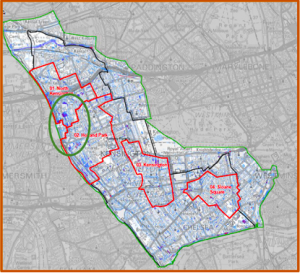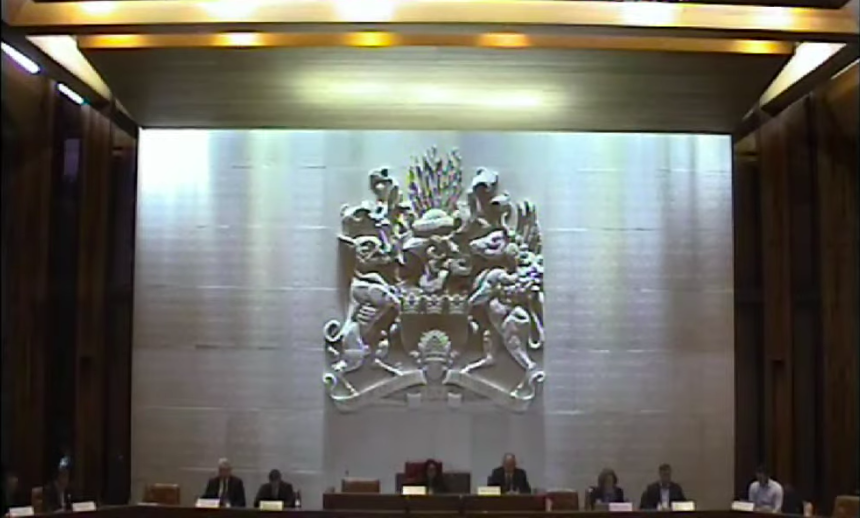
In red we have the critical drainage areas in RBKC and in green the area most affected by the July floodings
Last night RBKC investigated the flash floods that hit London in July particularly in their neighbourhoods where we certainly had more resident participation. On top of which we had representatives from OFWAT, the regulator of Water Utilities in the UK and the Consumer Council for Water as well as course Thames Water defending themselves along with local councillors.
But first the impact the floods had in the Royal Borough of Kensington & Chelsea. Clearly the sewer system was unable to cope with the intense storms in July which was compounded by the high tide. Altogether, some 25 streets were flooded, 220 residents re-housed with one block of flats completely surrounded by water and as well affected 3 schools. Some 25-50 local businesses were also affected and it has also had a major mental health toll as well.
One of the popular demands of the evening from residents was why not enough FLIPs (Flooding Local Improvement Programme ) particularly pumps built into basement properties were not built into their homes after 2007 floods, a key element of the Counters Creek Sewer flooding Alleviation scheme proposal from 2014.
It was interesting to note the tension between OFWAT and Thames Water and their recent performance is already an issue of concern for the regulator. Thames Water themselves accepted that their services were not good enough, largely due to its historic management and it would take some 8 years to turn it around again. So watch this space!
Finally the next borough scrutiny of the impact of the flash floods in West Central will be in Hammersmith & Fulham. So far we have heard different stories of the impact of the flash flooding in West Central and how to deal with the many issues it highlights.



















